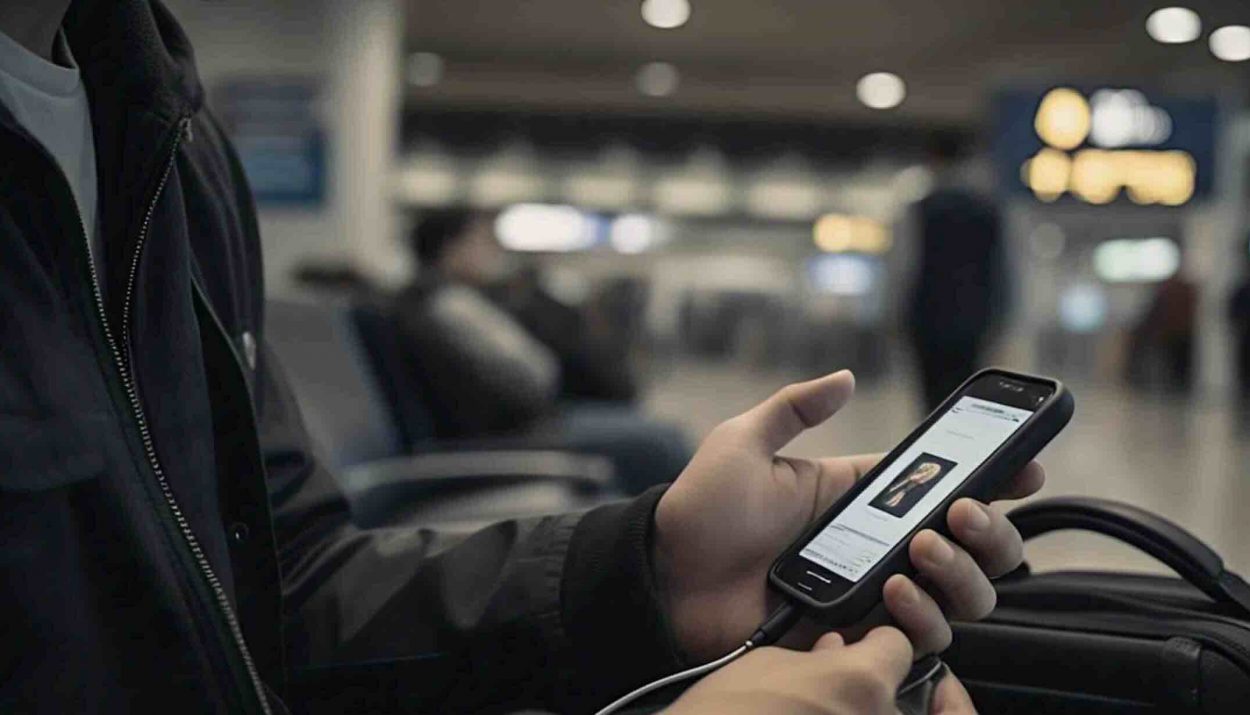In 2025, our smartphones are practically extensions of ourselves, and keeping them charged is a modern-day necessity. But a TSA warning about juice jacking might have you rethinking where (and how) you power up your device, especially at the airport.
Here’s everything you need to know about juice jacking, why the TSA is issuing alerts, and how to protect your information while traveling.
🧠 What Is Juice Jacking?
“Juice jacking” is a cyberattack that occurs when a public USB charging station is secretly modified to steal data or install malware on your phone or tablet.
While you’re simply trying to recharge your battery, hackers can use compromised charging ports to:
- Access personal data (contacts, photos, emails)
- Install spyware or ransomware
- Monitor your activity
- Lock you out of your device entirely
This threat is especially dangerous in high-traffic areas like airports, train stations, hotels, and convention centers, where charging kiosks are everywhere—and where travelers are often distracted or in a rush.
🚨 Why Is the TSA Warning About Juice Jacking?
The TSA warning about juice jacking comes amid a rise in cybersecurity threats targeting travelers. Alongside the FBI and FCC, the Transportation Security Administration has raised concern about USB charging stations being manipulated to spread malware or harvest data from unsuspecting users.
Although not every public port is infected, the risk is enough that security agencies are telling travelers: Don’t trust public charging ports—bring your own charger.
“Bad actors have figured out ways to use public USB ports to introduce malware and monitoring software onto devices. Carry your own charger and USB cord and use an electrical outlet instead.” — FBI Public Service Announcement
✈️ Where Juice Jacking Typically Happens
- Airport lounges and gates
- Hotel lobbies
- Cafés and restaurants with public charging hubs
- Rental car waiting areas
- Convention centers and event venues
These locations are high-risk simply because they offer free, easy-to-use USB ports—and that’s exactly what hackers rely on.
🔒 How to Protect Yourself from Juice Jacking
The good news? Avoiding juice jacking is simple. Here’s how to protect yourself:
- Use a Wall Adapter
Plug your USB cord into your own charging block and a wall outlet instead of a public USB port. - Bring a Portable Power Bank
Keep your own backup battery handy to recharge on the go, especially on long travel days. - Use a “USB Data Blocker” or “Juice Jacking Blocker”
These small devices attach between your USB cable and the charging port, blocking data transfer while still allowing electricity to pass. - Avoid Borrowing Charging Cables from Strangers
A compromised cable can be just as dangerous as a charging port. - Enable “Charging Only” Mode (If Your Device Allows)
Some smartphones let you toggle between charging and data transfer when connecting via USB. Always select “Charge Only.”
🧳 Final Thoughts
With travel season in full swing, the TSA warning about juice jacking is a reminder that cybersecurity doesn’t stop at your inbox. In an increasingly digital world, where even your charger can be a weapon, it’s essential to stay vigilant—especially on the move.
🔌 Bottom Line: Skip the public USB port. Use your own charger and stay safe.
✅ Quick Checklist: Safe Charging on the Go
- 🔋 Pack a power bank
- 🧱 Bring a charging block
- 🚫 Avoid USB-only stations
- 🔐 Use a USB data blocker
- ⚙️ Set your phone to “charge only”
Sources:






